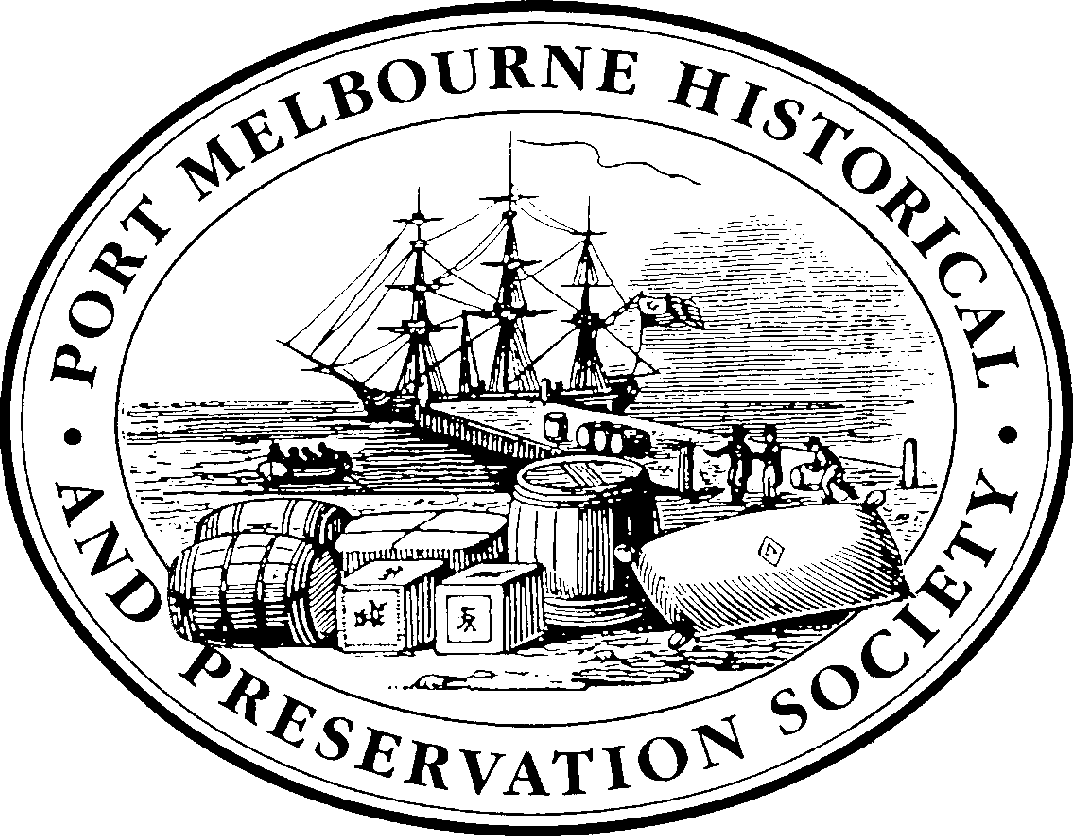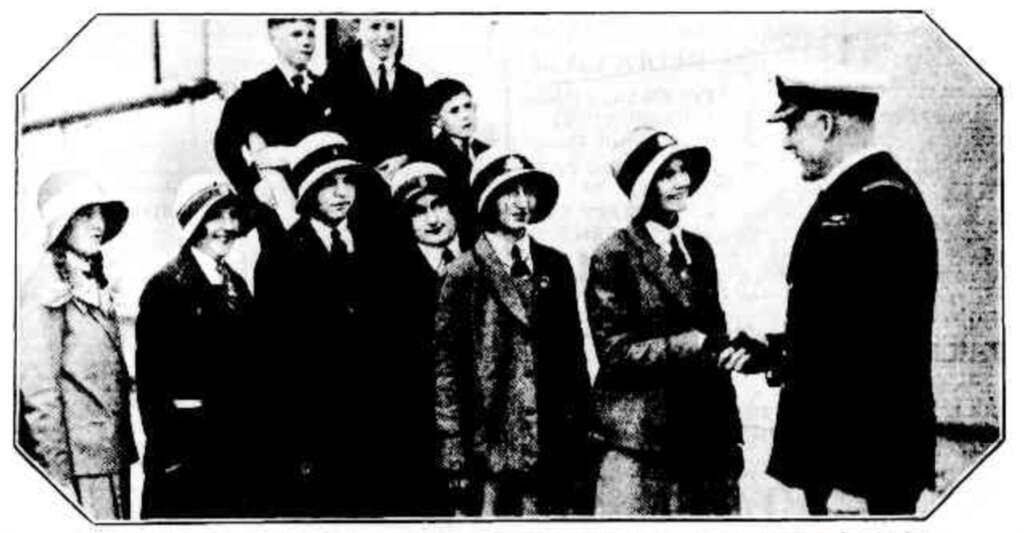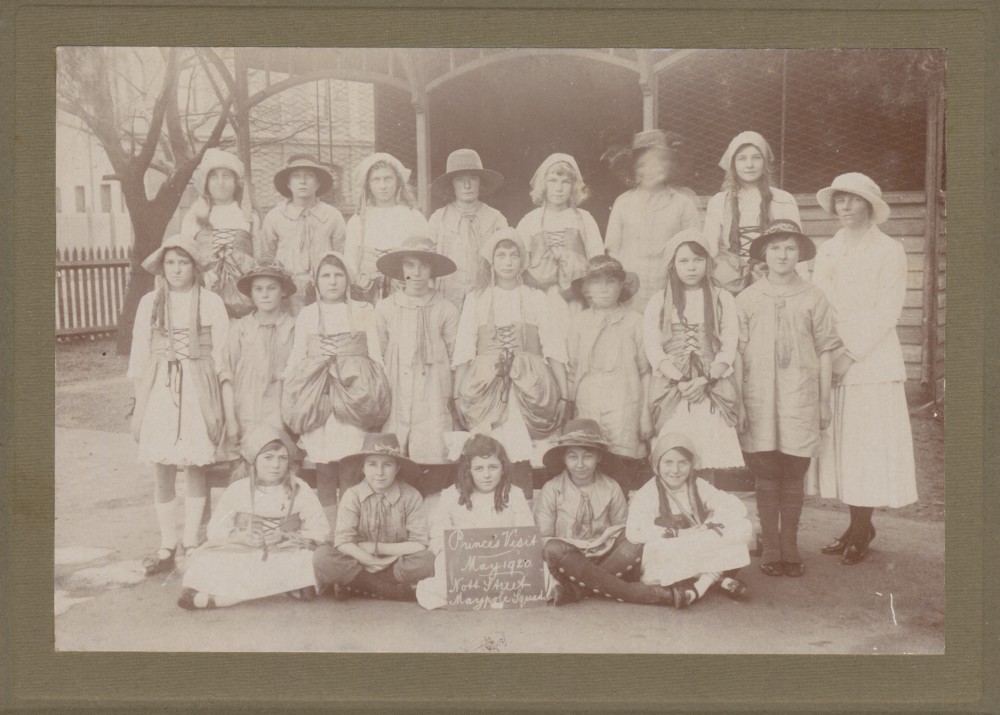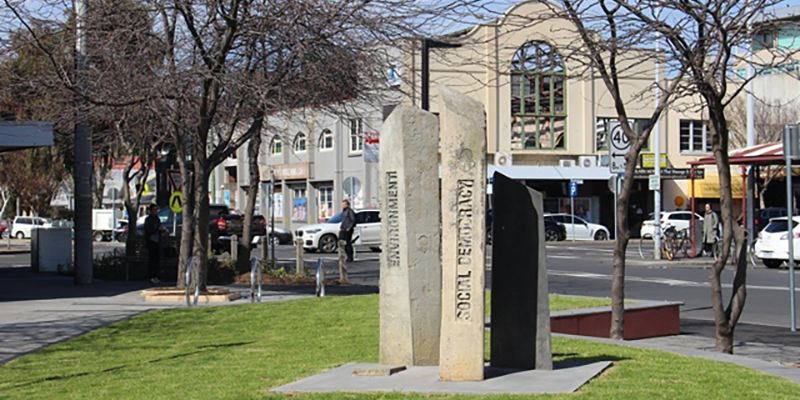Strathnaver: Luxury liner and Migrant Ship
by Peter Munro
Our love affair with P & O’s Strathnaver began in February 1931 when she was christened with a magnum of Australia’s finest burgundy.[i] Later that year, and with a population of just over one million, Melbourne shrugged off the Wall Street panic, and a world economic depression to welcome this gleaming white, three funnelled, nine deck luxury liner: the largest ship to have ever berthed at the Port of Melbourne. Her long association with these waters, bringing many “New Australians” here in the post-war period, lasted until 1962 when she was withdrawn from service and scrapped.
Able to accommodate 1,166 passengers and a crew of 476, it was the world’s biggest ship when it arrived in Melbourne on its maiden voyage in November 1931. With a length of 664′ (202m), the same distance between any two intersecting streets along Collins Street, and a height from its waterline to the top of its funnel 150′ (46m), which was 20′ (6m) taller than Melbourne’s soon to be completed Manchester Unity Building.
Prior to her arrival, P&O, the Peninsular and Oriental Steam Navigation Company, announced an essay writing competition to children of all Victorian schools. The winners would receive certificates, badges and cash prizes as well as a special privilege to tour the ship and meet its captain.[ii]
With only nine hours in port on its first visit here, the Strathnaver still managed to host an inspection and cocktail party of 1,000 invited guests before departing to the ports of Sydney and Brisbane.
The Myer Emporium provided a striking demonstration of maritime progress over the preceding eight decades. It displayed full-scale models of the first P & O Steamer, Chusan, that visited Melbourne in 1852 and the newly arrived Strathnaver. The 699 ton Chusan could fit on the raised deck or forecastle of the 22,500 ton Strathnaver.[iii]
Later that month, on the return trip to London it remained for three days in Melbourne. Over 12,000 Melburnians each paid one shilling, to inspect the ship with proceeds going to the ‘Missions for Seamen’ fund. Although there were two entry and exit gangways, such was the congestion that Sunday, 23 people, mostly women and children, fainted.[iv] The following evening, a gala ball attended by 1,500 guests was held on board the Strathnaver with proceeds of over £1,000 going to the Melbourne Children’s Hospital.
In 1936, the Strathnaver set a record of 38 days in its journey from London to Melbourne. Her plush interiors gave way to more basic accommodation between 1940 and 1948 when she served as a troop ship ferrying around 129,000 personnel and later repatriated many.
Observant readers will note that the Strathnaver pictured in the postcard only has one funnel not three. It turns out the middle funnel was the only functioning smokestack; the other two were dummy funnels, placed there for aesthetic effect. These fore and after funnels were removed in 1949 when she was refitted before resuming commercial service after the war.
One of the many migrants she brought to Victoria during the 1950s and 60s was aeronautical engineer and celebrated novelist Nevil Shute.[v]
The Strathnaver was the first of five P&O ships named with the prefix “Strath”, a Gaelic word meaning “valley”: so, “Valley of the Naver”, a river on the northern coast of Scotland. Her sister ships were the Strathaird, Strathmore, Stratheden and Strathallan. Given the many enterprising Scots who came to Victoria from the 1850s, it is not surprising that Strathnaver was earlier used to name a new estate in Prahran in the 1880s.
The Strathnaver was commemorated in 2009 on one of the interpretive benches made from old wharf timber on the renovated Princes Pier. The names Strathnaver, Strathmore, and Stratheden are listed on the 1998 nautical themed sculpture, “Destination”, located on the traffic island near Station Pier.
[i] 1931 ‘LINER STRATHNAVER.’, The Sydney Morning Herald (NSW : 1842 – 1954), 7 February, p. 13. , viewed 19 June 2025, http://nla.gov.au/nla.news-article16752405
[ii] 1931 ‘WINNERS OF THE P. AND O. ESSAY COMPETITION.—’, The Argus (Melbourne, Vic. : 1848 – 1957), 14 November, p. 5. , viewed 19 June 2025, http://nla.gov.au/nla.news-article4422255
[iii] 1931 ‘“CHUSAN” (1852) V. “STRATH-NAVER” (1931).’, Advocate (Melbourne, Vic. : 1868 – 1954), 1 October, p. 31. , viewed 19 June 2025, http://nla.gov.au/nla.news-article171682892
[iv] 1931 ‘WOMEN FAINT IN PIER CRUSH’, The Sun News-Pictorial (Melbourne, Vic. : 1922 – 1954; 1956), 30 November, p. 4. , viewed 19 June 2025, http://nla.gov.au/nla.news-article276259780
[v] 1950 ‘THE SUN FEATURES’, The Sun News-Pictorial (Melbourne, Vic. : 1922 – 1954; 1956), 16 June, p. 9. , viewed 19 June 2025, http://nla.gov.au/nla.news-article279722859







